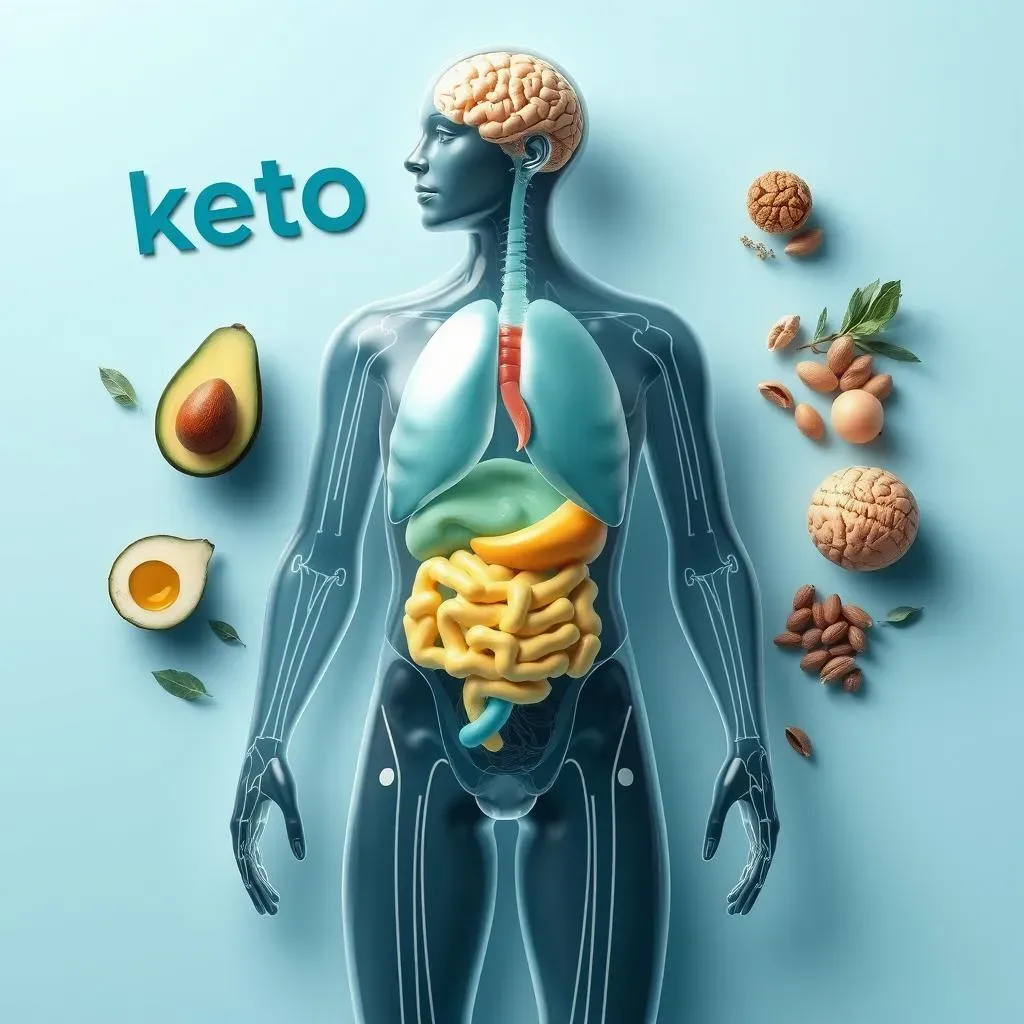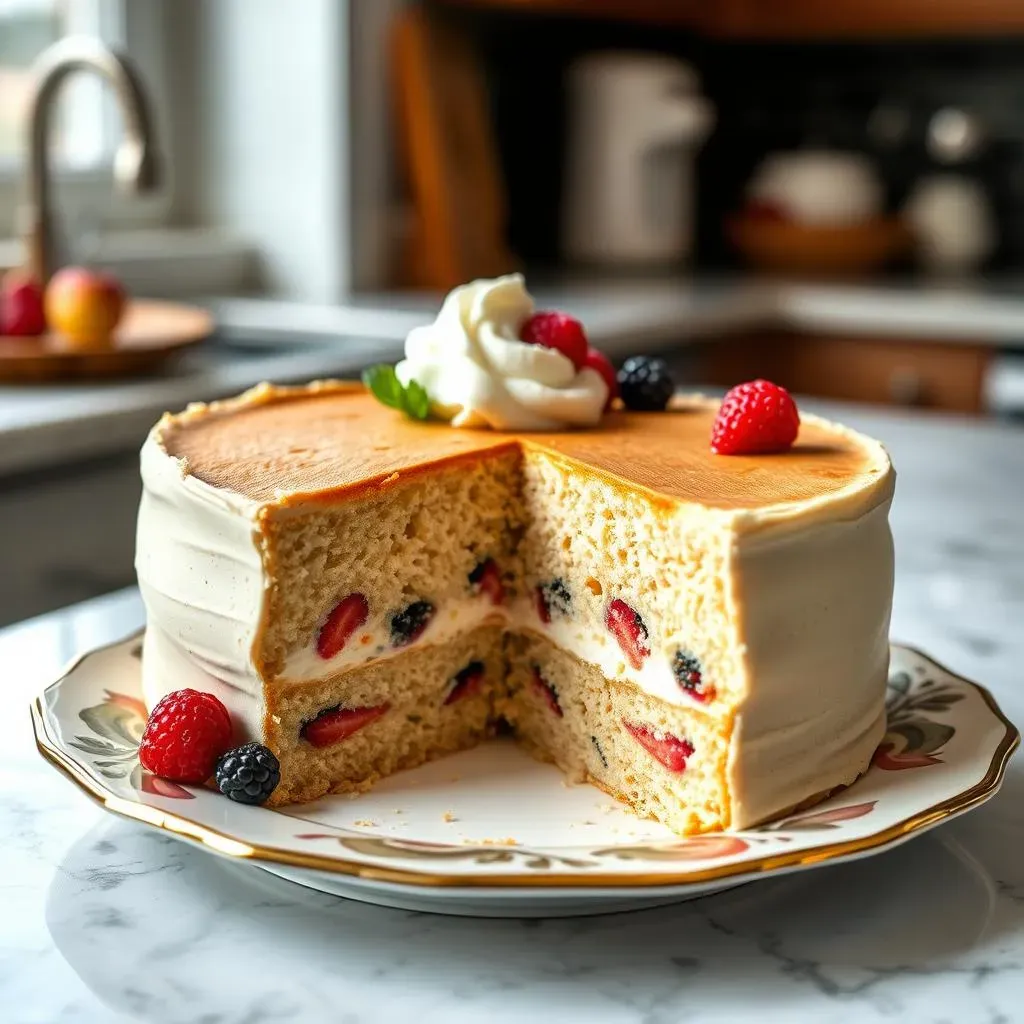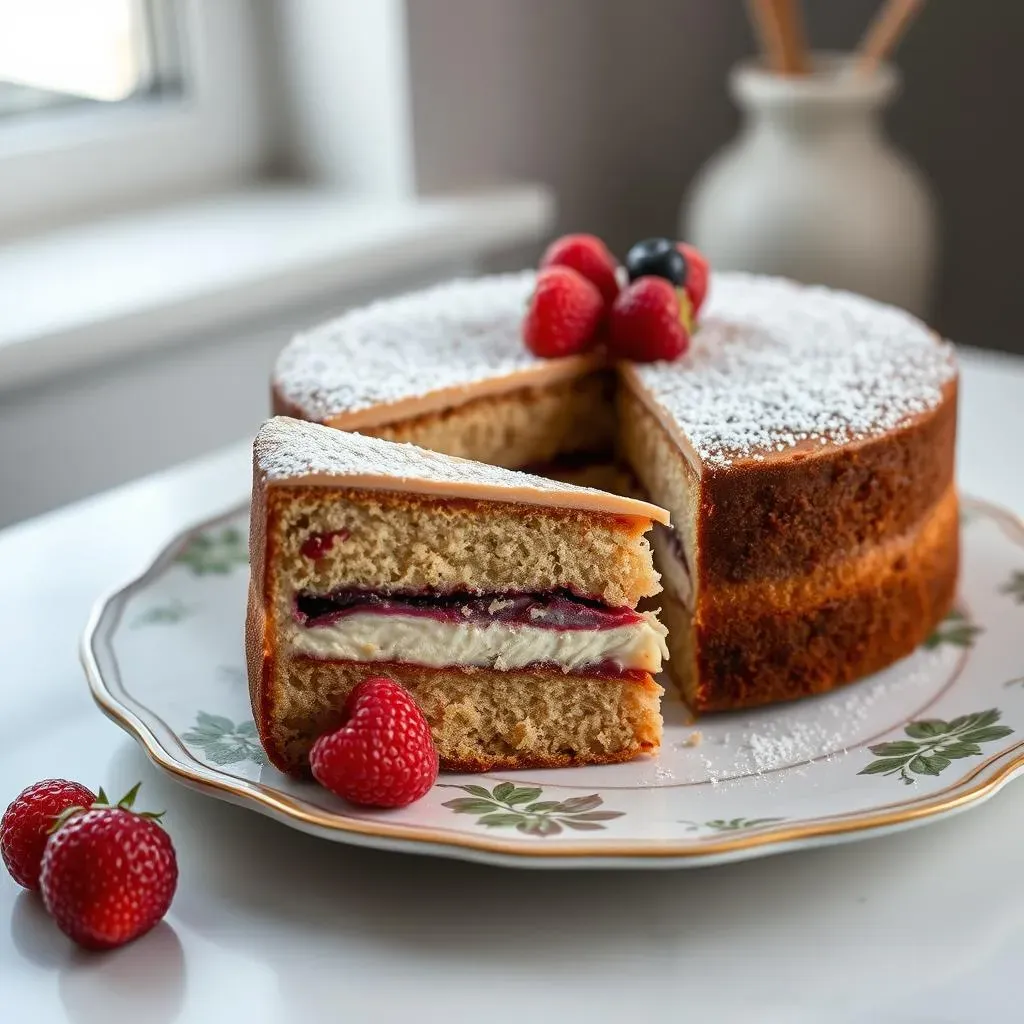Table of Contents
Ever wondered what the fuss is about "keto cakes"? Are you curious about how to enjoy delicious treats while sticking to your ketogenic diet? This article is your ultimate guide to understanding keto cakes. We'll explore the fundamentals of the keto diet, explaining why it works and how it affects your body. Then, we'll dive into the science behind keto cakes, uncovering the secrets to their unique texture and taste. You'll discover what makes a keto cake different from a regular cake, and learn about the essential ingredients used to create these delightful low-carb treats. We'll also provide you with a helpful overview of various keto cake recipes and tips for baking success, whether you're a seasoned baker or a complete novice. Finally, we'll address common questions and concerns about keto cakes, ensuring you feel confident in your baking journey. Get ready to unravel the mystery of what is keto cakes and unlock the delicious potential of low-carb baking! Prepare to be amazed by how easy it can be to enjoy a delicious, guilt-free slice of cake.
Understanding the Keto Diet
Understanding the Keto Diet
What is Ketosis?
The ketogenic diet, or keto diet, is all about drastically reducing carbohydrate intake and replacing it with healthy fats. Think avocados, nuts, olive oil – the good stuff! When you severely limit carbs, your body enters a metabolic state called ketosis. This is where your body starts burning stored fat for energy instead of glucose (sugar) from carbs. It's like switching your car's fuel from gasoline to diesel – a different source, but it still gets you where you need to go!
Ketosis isn't some magical weight-loss potion; it's a natural metabolic process. Your body prefers glucose for energy, but when that's unavailable, it efficiently switches to fat stores. This fat burning process can lead to weight loss, increased energy (once your body adapts), and even improved blood sugar control for some people. But remember, it's not a quick fix and requires careful planning and monitoring. If you're thinking about starting keto, it's a good idea to chat with your doctor first, especially if you have any underlying health conditions.
- Focus on healthy fats
- Limit carbs drastically
- Monitor your ketone levels
Benefits and Considerations of the Keto Diet
Many people find that the keto diet helps them lose weight effectively. Because you're burning fat for energy, you're tapping into those stubborn reserves. Some also report increased mental clarity and sustained energy levels, though the experience can vary. Think of it like this: your brain is a supercomputer that runs best on a clean, efficient fuel source. Keto provides that, but some people might experience what's called the "keto flu" in the beginning—headaches, fatigue, and nausea. This is usually temporary as your body adjusts.
However, the keto diet isn't for everyone. It can be restrictive, requiring careful meal planning and tracking of macronutrients (fats, proteins, and carbs). Some people may experience nutrient deficiencies if they don't plan carefully. Also, long-term effects of the keto diet are still being studied, so it’s important to approach it with caution and consult with a healthcare professional before making significant dietary changes. For more information on specific keto-friendly foods, check out our guide on are rice cakes keto?
Benefit | Consideration |
|---|---|
Weight loss | Restrictive diet |
Increased energy | Potential nutrient deficiencies |
Improved mental clarity | "Keto flu" side effects |
The Science Behind Keto Cakes
The Science Behind Keto Cakes
Low-Carb Flour Power
So, you're making a keto cake. The first thing that jumps out is the flour, right? Forget all-purpose flour; that's a carb bomb! Keto cakes rely on low-carb flour alternatives like almond flour, coconut flour, or even a blend of both. These flours are lower in carbohydrates and higher in healthy fats, which is crucial for staying in ketosis. Almond flour gives a slightly nutty flavor and a finer crumb, while coconut flour is more absorbent and can result in a denser cake. It's all about experimentation to find your perfect blend!
Think of it like this: regular flour is like adding sugar to your coffee—it adds sweetness and structure but a lot of carbs. Keto flours are more like adding a dash of cinnamon – it adds flavor and complexity without the carb overload. Choosing the right flour impacts the texture and taste of your keto cake. For more tips, check out our guide on making moist keto cakes.
- Almond flour
- Coconut flour
- Other low-carb flour blends
Sweeteners and Their Secrets
Next up: sweetness! Forget refined sugar. Keto cakes use sugar substitutes like erythritol, stevia, or monk fruit. These sweeteners provide sweetness without significantly impacting your blood sugar levels or kicking you out of ketosis. Erythritol has a mild sweetness and a cooling sensation, while stevia is intensely sweet and can be overpowering if not used carefully. Monk fruit is another naturally sweet option that’s gaining popularity. The key is to find a sweetener that you enjoy and that works well with the other ingredients in your recipe.
The science here is about finding sweeteners that don't spike your insulin levels. High insulin levels interfere with the fat-burning process of ketosis. Different sweeteners have different glycemic indices (how much they raise blood sugar). You can explore different sweetener options and ratios to find the perfect balance of sweetness and texture in your keto cake. Want to know more about sugar substitutes? Check out our article on do keto cakes have sugar?
Sweetener | Sweetness Level | Potential Aftertaste |
|---|---|---|
Erythritol | Mild | Cooling |
Stevia | High | Slightly bitter |
Monk Fruit | Medium | Clean |
Fat is Your Friend
Finally, let's talk about fat. In keto baking, fat isn't the enemy; it's your friend! Fat provides moisture, richness, and that satisfying mouthfeel you crave in a cake. Keto cakes often incorporate healthy fats like butter, coconut oil, or avocado oil. These fats contribute to the cake's texture and flavor, making it moist and delicious. Remember, on a keto diet, fat is your primary source of energy, so it plays a vital role in both the diet and the baking process.
Think of it this way: fat is the secret ingredient to a moist and delicious keto cake. It's what replaces the structure and moisture typically provided by the carbs in regular cakes. Experiment with different fats to see how they impact the final product. For instance, coconut oil can add a subtle coconut flavor, while avocado oil provides a neutral flavor. Ready to try some recipes? Check out our guide on how to make keto cakes!
Making Keto Cakes: Ingredients and Recipes
Making Keto Cakes: Ingredients and Recipes
Essential Keto Cake Ingredients
Let's talk about the building blocks of a killer keto cake. First, you'll need your low-carb flour – almond flour is a classic choice, giving a lovely texture. Coconut flour works too, but it's super absorbent, so you might need to adjust liquid amounts. Then, you'll need a keto-friendly sweetener; erythritol is a popular choice because it doesn't have much of an aftertaste. Stevia is another option, but use it sparingly as it's very potent. Don't forget the healthy fats! Butter, coconut oil, or avocado oil all add moisture and richness. Finally, eggs bind everything together, adding structure to your cake. Remember, the right combination of these ingredients is key to a delicious keto cake. Need some more ideas? Check out our guide on how to make moist keto cakes.
Beyond the basics, you can get creative! Think about adding extracts like vanilla or almond for extra flavor. You can also incorporate keto-friendly chocolate chips, nuts, or seeds for texture and added nutrients. Experiment with different spices to create unique flavor combinations. The possibilities are endless! Want to know more about suitable sweeteners? Check out our article on do keto cakes have sugar?
- Almond Flour
- Coconut Flour
- Erythritol or Stevia
- Butter, Coconut Oil, or Avocado Oil
- Eggs
Simple Keto Cake Recipes
Now for the fun part – actually making the cake! A basic keto cake recipe usually involves combining the dry ingredients (flour, sweetener, baking powder), then whisking together the wet ingredients (eggs, oil, extracts). Gently fold the wet ingredients into the dry ones, being careful not to overmix. Pour the batter into a greased pan and bake until a toothpick inserted into the center comes out clean. It's really that simple! Let the cake cool completely before frosting.
From there, you can adapt the recipe to your liking. Add berries, nuts, or spices to create unique flavor profiles. Experiment with different frostings, like a cream cheese frosting or a sugar-free chocolate ganache. Don't be afraid to get creative and try new things. Baking is all about experimentation, and keto baking is no exception. Remember to always check your recipe’s instructions carefully, and don't be afraid to adjust baking times based on your oven. Want to know where to buy keto-friendly ingredients? Check out our guide on where to buy keto cakes.
Ingredient | Quantity (adjust as needed) |
|---|---|
Almond Flour | 1 ½ cups |
Erythritol | ½ cup |
Baking Powder | 1 tsp |
Eggs | 2 large |
Butter, melted | ½ cup |
Keto Cake FAQs and Considerations
Keto Cake FAQs and Considerations
How Long Do Keto Cakes Last?
This depends on several factors, including the ingredients used and how you store the cake. Generally, keto cakes, stored properly in an airtight container in the refrigerator, will last for 3-5 days. However, some cakes with higher moisture content may not keep as long. Cakes stored at room temperature will likely spoil faster, so refrigeration is always recommended. Remember, the quality and taste may diminish over time. For tips on extending the life of your keto cake, check out our detailed guide on refrigerating Costco cakes (the principles are similar!).
The type of sweetener you use also plays a role. Some sweeteners are more prone to attracting moisture than others, potentially affecting the cake's shelf life. This is something to keep in mind when choosing your ingredients. For instance, cakes made with erythritol might last a bit longer than those made with stevia. Proper storage is key! An airtight container keeps out air and moisture, slowing down spoilage. So, while the exact duration is variable, refrigeration and airtight containers are your best friends in extending the shelf life of your delicious keto cake. To learn about other keto-friendly desserts, check out this article on what happens if you eat cake on keto.
- Refrigerate in an airtight container
- Consider the sweetener used
- Expect a shelf life of 3-5 days (refrigerated)
Can I Freeze Keto Cakes?
Absolutely! Freezing is a great way to extend the shelf life of your keto cakes, even beyond the refrigerated timeframe. To freeze, wrap the cake tightly in plastic wrap, then place it in a freezer-safe bag or container. This double-wrapping prevents freezer burn and helps maintain the cake's moisture and flavor. When you're ready to enjoy it, thaw it in the refrigerator overnight, or at room temperature for a faster thaw (but be mindful of spoilage!).
Freezing can actually be beneficial for some keto cakes. It can improve the texture of some cakes by reducing moisture and making the crumb more firm. This is particularly true for cakes made with coconut flour, which tends to be more absorbent. You can freeze whole cakes, or slice them before freezing for easier portioning. Remember to label and date your frozen cake for easy tracking. Freezing is a fantastic way to enjoy your favorite keto cake long after it's been baked. For more information on keto-friendly baking, you might find our guide on making moist keto cakes helpful.
Freezing Method | Pros | Cons |
|---|---|---|
Whole Cake | Convenient, maintains shape | Requires more thawing time |
Sliced Cake | Easy portioning, faster thawing | May slightly dry out edges |
